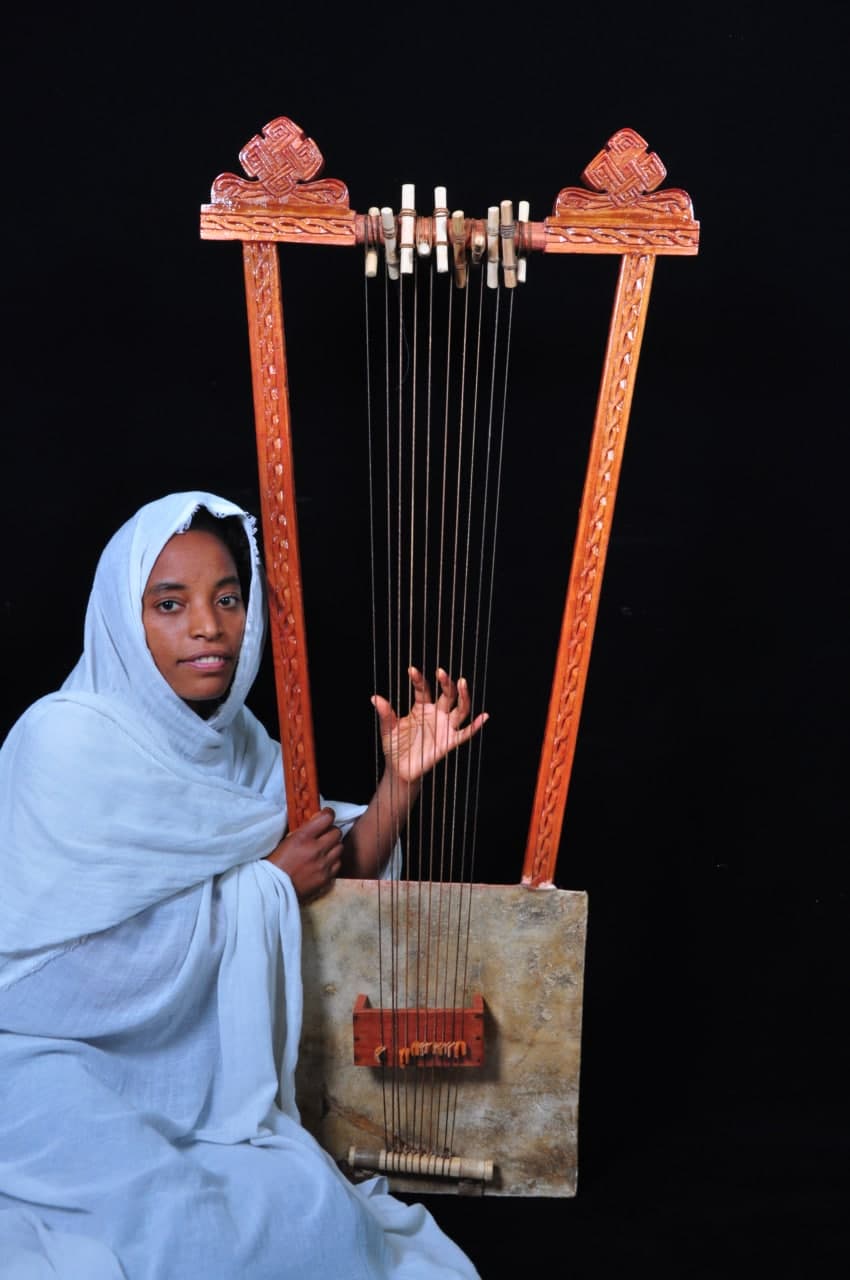Symbolical Representations of the Begena
The begena is an Ethiopian chordophone that resembles a very large lyre. Traditionally it is 1 to 1.5 meters long with 10 string usually made of nylon(instead of the traditional cow or ox gut). It has a boxed sound box ordinarily made of eucalyptus or juniper wood which is covered with stretched hide and produces a haunting, almost hypnotic bass tone with a unique twang or buzzing sound. The begena is used extensively by members of the Ethiopian Orthodox Church for songs that resemble prayer chants, sometimes lasting as long as an hour. Since the instrument is not used in actual church services and prayer meditation is frequently performed alone, even in Ethiopia the begena is not commonly heard.


History
Legend holds that Menelik I (the son of King Solomon and Makeda, Queen of Sheba) bought the begena to Ethiopia around 950 BC which would explain why the begena is also known as the "Harp of King David". These claims have been questioned, but the Ethiopian Church truly believes that the begena is the instrument King David played as he danced in front of the Ark of the Covenant and performed for King Saul to cure his insomnia.
BEGENA
The begena) is an Ethiopian and Eritrean string instrument that resembles a large lyre. It is believed that Menelik I brought the instrument to Ethiopia from Israel, where David had used the begena to soothe King Saul's nerves and heal him of insomnia. The begena was used primarily as an accompaniment during meditation and prayer. Though commonly played in the home, it is sometimes played during festive occasions. During Lent, the instrument is most often heard on the radio. One may compose one's own texts or they may be taken from the Bible, from the Book of Proverbs, or from the Book of Qine, an anthology of proverbs and love poems.

